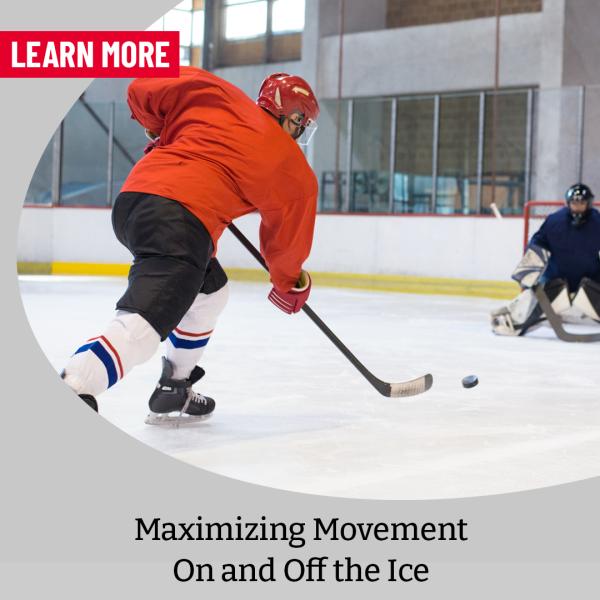
Contributions made and reviewed by Monika Burrescia, PT, DPT
Like all athletes, hockey players can benefit from a dynamic and static stretching routine in their regular skating work, endurance, and strength training regimen. While online programs, videos, and blog posts like this can help direct your training, an athletic trainer or physical therapist can provide individualized guidance to enhance performance and stay injury-free.
That said if you’ve ever wondered when to do dynamic stretches? You’ll find that here. If you’ve questioned when to do static stretches? Or what is all this talk about mobility? We have you covered. Keep reading to learn how stretching can maximize your movement on and off the ice.
Get Your Free Physical Therapy Screening
Not sure where to start with physical therapy? Get a free screening and let us help you start the path to recovery today.
Get My Complimentary Screening
Dynamic Stretches
What is a dynamic stretch? A dynamic stretch is where athletes move their joints and muscles through a full range of motion. These active motions are sports-specific, performed between 10-12 repetitions and focus on specific muscle groups.
For hockey players, this may mean jumping jacks, shoulder pass-throughs and lunges as a part of their warm-up. Motions like these mimic those that athletes will do once on the ice and better prepare them for the activity ahead. Another stretch may include the kneeling groin/adductor stretch. “Adductor and groin strains are common in hockey players,” says Monika Burrescia, PT, DPT. “Many players do this on the ice after skating a few laps since they have knee pads on.”
In addition to those stretches mentioned above, many others are recommended for athletes. Some of these stretches include:
- The Couch Stretch
- The 90/90 Stretch
- Book Openers
- Ankle Gliders
- Lunge with a Twist
Stretching is a critical part of reducing injury and enhancing performance. Therefore, athletes are encouraged to perform dynamic stretches as part of their regular warm-up, especially before practice and games. Numerous studies show that dynamic stretching will improve performance, whereas only static stretching before a game may have a negative impact.
Athletes can also perform dynamic stretches post-game as they wind down, but static stretches can impact players post-practice or game.
Static Stretches
After a workout, game or even on an off-day, athletes are encouraged to perform both dynamic and static stretches. As the athlete cools down, they can go from dynamic to more passive stretching. The static stretches will lengthen specific muscles and relieve stress and tension.
Unlike their dynamic counterparts, static stretches can help relax the body and return the muscles to their pre-workout/game length. Stretching helps relieve stiffness and soreness in athletes as well as helps them maintain their flexibility and range of motion. Some areas hockey players will want to focus on include the following:
- Hamstrings
- Achilles’ tendon
- Quadriceps
- Hips
- Ankles
As mentioned above, only static stretching before a practice or game can yield less than optimal results once the puck drops. That said, static stretching should be reserved for post-workout, post-game or on your off days. Implementing static stretching, especially with a mobility program, improves your overall ability to move as an athlete.
Mobility Training
Mobility is often confused with flexibility and used interchangeably. While the two are closely related, there are distinct differences. Flexibility refers to your muscle’s ability to lengthen or stretch. Mobility is rather your body’s ability to move a joint freely through its range of motion.
The two overlap because inflexible muscles limit the body’s ability to achieve its optimal range of motion. When this occurs, pain can follow, and injuries are more likely to happen. You may limit your skating speed or shooting ability without the right balance of mobility and flexibility.
There are several online resources, articles and sites to help hockey players improve their mobility (and flexibility). But taking the next step and working with an athletic trainer or physical therapist can identify those particular areas that need extra attention. It’s all about maximizing your time on the ice; our professionals can help you do that.
Conclusion
If you are recovering from an injury or want to move better, working with an athletic trainer or physical therapist can assist any athlete’s performance. Our professionals are movement experts trained to assess and evaluate the body to maximize performance. Visit any of our 900+ clinics and learn how to move better today.
